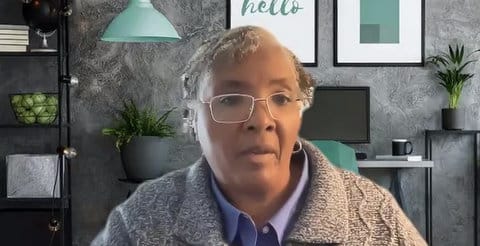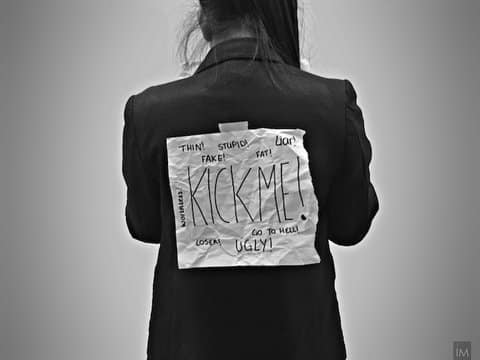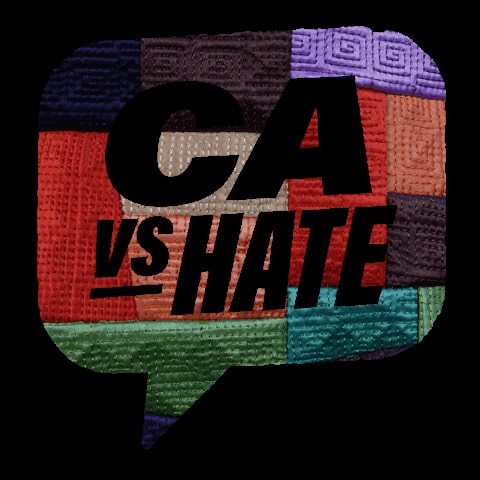
30 Oct Online Hate ‘Bleeds Into Real Life,’ Promotes School Bullying

Santa Barbara NAACP president Connie Alexander-Boaitey said in an Ethnic Media Services briefing that bullying faced by Black students, including being called the n-word, “is a constant.” (Screenshot captured by Julia Métraux / The CC Pulse)
By Julia Métraux
Many high schoolers are glued to social media, which can be great for building connections with others, but, as Dashka Slater, author of “Accountable,” points out, it also exposes adolescents to content that can fuel hate.
“About half of that extremist content online focuses on race or ethnicity,” Slater said at an Oct. 27 Ethnic Media Services briefing on school bullying and hate. “This invariably bleeds into real life.”
Over the past few years, school bullying has been on the rise. Forty percent of students reported being bullied on school property, according to a 2023 survey from the Boys and Girls Clubs of America, and around 18% have been the target of cyberbullying in the past year. Research has shown that even when people leave K-12, the impact of school bullying can still affect mental health in the long term.
“People living at the intersection of two marginalized social identity groups…are particularly at risk for real harm,” said Becky Monroe, the deputy director of California Civil Rights Department’s strategic initiatives and external affairs.
The California Department of Education defines bullying as a form of violence, which can be physical, verbal, psychological and/or sexual. The department also finds that one effective method to confront school bullying could be raising awareness of the forms it takes and the direct impact it has on students.
>>>Read: ‘Prepare Ourselves, and Protect Yourself’: Students Open Up About Bullying
Anti-bullying work in schools can also help students realize how they are treating their peers can be cruel, a form of violence, and possibly even a hate crime. Of kids who are bullying others, “it’s very easy to feel like these are bad, racist kids who are doing this or bad, transphobic kids or whatever,” Slater said, but it’s much more important to educate these students.
Throughout the briefing, panelists spoke about the importance of addressing school bullying happening between racial and ethnic groups. Santa Barbara NAACP president Connie Alexander-Boaitey said Black students are frequently bullied through language, which sometimes escalates physically.
“[There is] a pervasive calling of the n-word by young Latino students to Black students,” Alexander-Boaitey said. “It’s every day.”
>>>Read: RHS Student Wants to Take the N-Word ‘Out of People’s Vocabulary’
Black leaders in Santa Barbara have tried to address bullying faced by Black students, Alexander-Boaitey said, but their concerns are often brushed off.
“The eraser culture that says now, ‘We don’t really need to talk about that. Oh, it was just a single incident,’ ” Alexander-Boaitey said. “But it is a constant.”
Being the target of anti-Black racism can have a sizable impact on a Black student’s mental health, Alexander-Boaitey continued, contributing to the statistic that “10% of Black youth at some point might consider suicide or attempt.”
Anahí Santos, the youth wellness coordinator at One Community Action, has also seen the harms of bullying within the Latinx community in Santa Maria Valley, noting that white or white-passing Latinx students sometimes target newly arrived youths from Central America or Mexico.
“There have been times when we’ve had to take them to school, right before school starts,” Santos said, in supporting these youths. “We have to wait in line with them to get to the classroom.”
As a result of this bullying, Santos says, “Our own community is hurting itself, so that we can then have the prize that we’re whiter or who’s the whitest.”
While students can learn these beliefs through hate-filled content online, they also can by the views of the people around them, highlighting the importance of adults to reckon with hate-filled beliefs they may have.
“When there is tension and an increase in acts of hate in the greater community, [this] will be reflected in schools and among students as well,” Monroe said.
This resource is supported in whole or in part by funding provided by the State of California, administered by the California State Library in partnership with the California Department of Social Services and the California Commission on Asian and Pacific Islander American Affairs as part of the Stop the Hate program. To report a hate incident or hate crime and get support, go to CA vs Hate.





No Comments